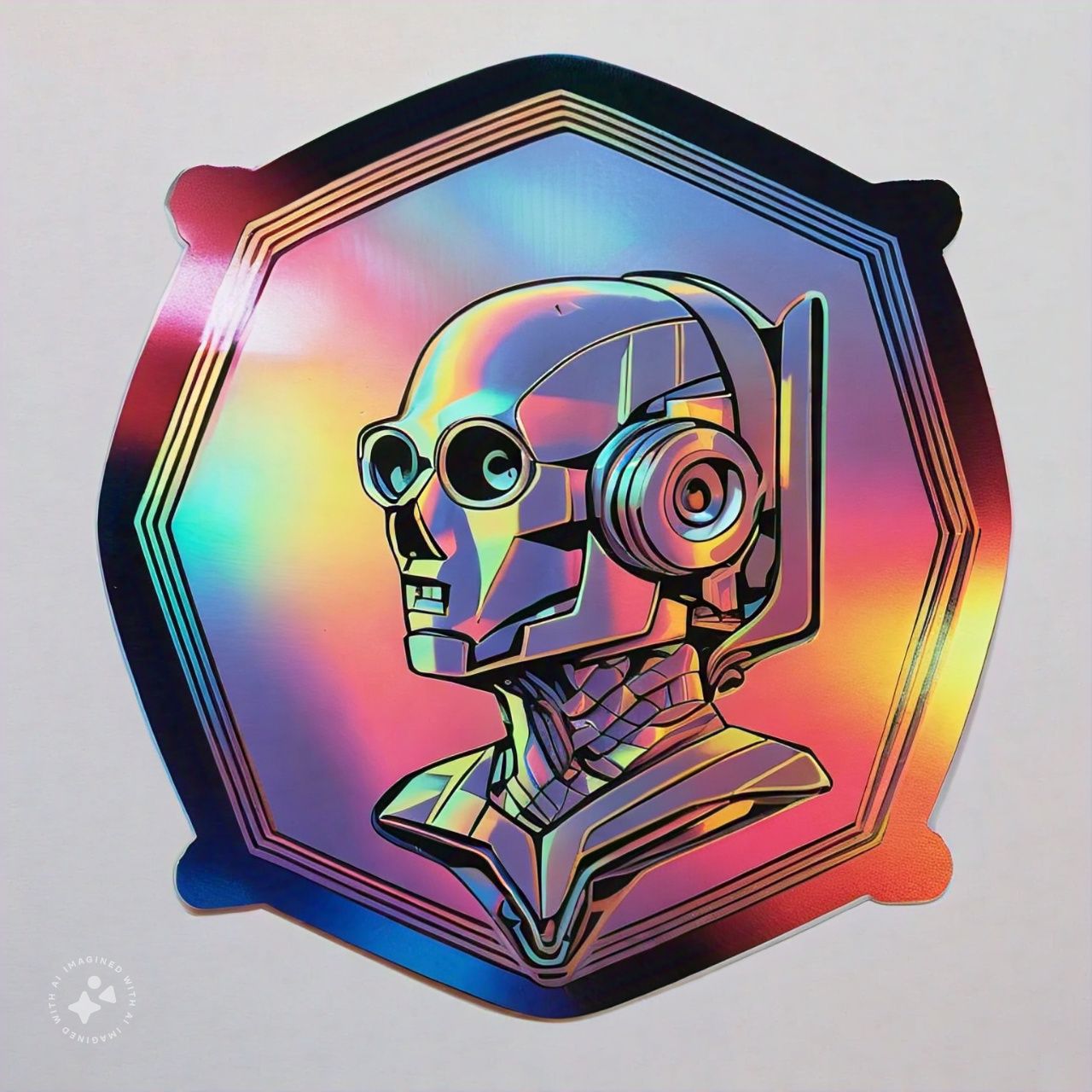Holographic stickers, with their shimmering, multidimensional appeal, have captured the imagination of collectors, businesses, and creative enthusiasts alike. These stickers have evolved significantly from their early days, reflecting advancements in technology and design. This article delves into the fascinating history and evolution of holographic stickers, exploring their origins, technological advancements, and modern applications.
The Beginnings: A Glimpse into the Origins
The concept of holography began in the 1940s, pioneered by Hungarian physicist Dennis Gabor. Gabor’s work laid the foundation for what would become holography, but it wasn’t until the 1960s that the first practical holograms were created. The invention of the laser by Theodore Maiman in 1960 was crucial for this breakthrough, enabling high-resolution holography.
Initially, holography was used primarily in scientific and industrial applications. It wasn’t until the late 1970s and early 1980s that holography began to capture the public’s imagination, thanks in part to the development of holographic displays and artistic applications. The first commercial holographic stickers appeared around this time, merging this sophisticated technology with everyday consumer products.
Technological Advancements: From Complex to Accessible
Early holographic stickers were complex and costly to produce, limiting their use to specialized applications. These stickers used traditional holographic techniques, where light interference patterns were recorded on a photographic plate and then reproduced on a sticker surface. This process was intricate and required precise conditions.
The 1990s marked a turning point with the advent of more affordable and user-friendly holographic technologies. The introduction of thin-film holography allowed for more straightforward and cost-effective production. Thin-film holography involved creating a holographic image on a thin layer of material, which could then be applied to stickers. This advancement made holographic stickers more accessible to the general public and paved the way for their widespread use.
Design and Aesthetic Evolution: From Basic to Artistic
As holographic technology became more accessible, the design possibilities expanded. Early holographic stickers featured simple geometric patterns and logos, often used for security and branding purposes. However, as technology advanced, so did the design capabilities. The late 1990s and early 2000s saw a surge in artistic and intricate holographic designs.
Designers began experimenting with more complex images and animations, incorporating holographic stickers into various applications, including product packaging, promotional materials, and even art installations. The ability to create dynamic and eye-catching designs revolutionized the sticker industry, offering new ways to capture attention and convey messages.
The Modern Era: Holographic Stickers in Today’s World
In recent years, holographic stickers have continued to evolve, thanks to advancements in digital printing and laser technology. Modern holographic stickers can feature high-resolution images, intricate animations, and even interactive elements. Digital holography allows for the creation of stickers with multiple layers and effects, adding depth and complexity to designs.
One of the most exciting developments in recent years is the integration of augmented reality (AR) with holographic stickers. AR technology allows users to interact with holographic stickers through their smartphones or tablets, creating immersive experiences that go beyond traditional static designs. This innovation has opened up new possibilities for marketing, education, and entertainment.
Applications and Uses: From Branding to Personal Expression
Holographic stickers have found applications in various fields, thanks to their versatility and visual appeal. Here are some key areas where holographic stickers are making an impact:
- Branding and Marketing: Companies use holographic stickers to enhance brand recognition and security. Holographic labels are often used on products to prevent counterfeiting and add a touch of luxury. The eye-catching nature of holographic stickers also makes them effective for promotional campaigns.
- Packaging: Holographic stickers are widely used in packaging to attract consumers and add a premium feel. From food products to cosmetics, holographic stickers can make packaging stand out on store shelves.
- Collectibles: Holographic stickers have become popular among collectors, particularly in the realms of sports cards, gaming, and memorabilia. Their unique and dynamic nature makes them highly sought after by enthusiasts.
- Personal Expression: Holographic stickers are also used for personal expression, with many people incorporating them into laptops, phone cases, and other personal items. Their vibrant and shifting colors make them a favorite for adding a touch of individuality.
- Educational Tools: In education, holographic stickers are used to create interactive learning materials. AR-enabled holographic stickers can provide additional information and visual aids, enhancing the learning experience.
Challenges and Future Directions
Despite their popularity, holographic stickers face some challenges. The cost of production can still be relatively high, particularly for highly customized or large-scale projects. Additionally, ensuring the durability of holographic stickers, especially in outdoor or high-wear environments, remains a concern.
Looking ahead, the future of holographic stickers promises exciting developments. As technology continues to advance, we can expect even more innovative designs and applications. The integration of holographic stickers with emerging technologies, such as virtual reality (VR) and artificial intelligence (AI), could lead to entirely new experiences and functionalities.
Conclusion
The history and evolution of holographic stickers reflect a fascinating journey from scientific innovation to everyday consumer products. From their complex beginnings to their current status as versatile and visually stunning items, holographic stickers have made a significant impact on various industries. As technology continues to evolve, the potential for holographic stickers to create new and immersive experiences is boundless, promising an exciting future for this dynamic field.
